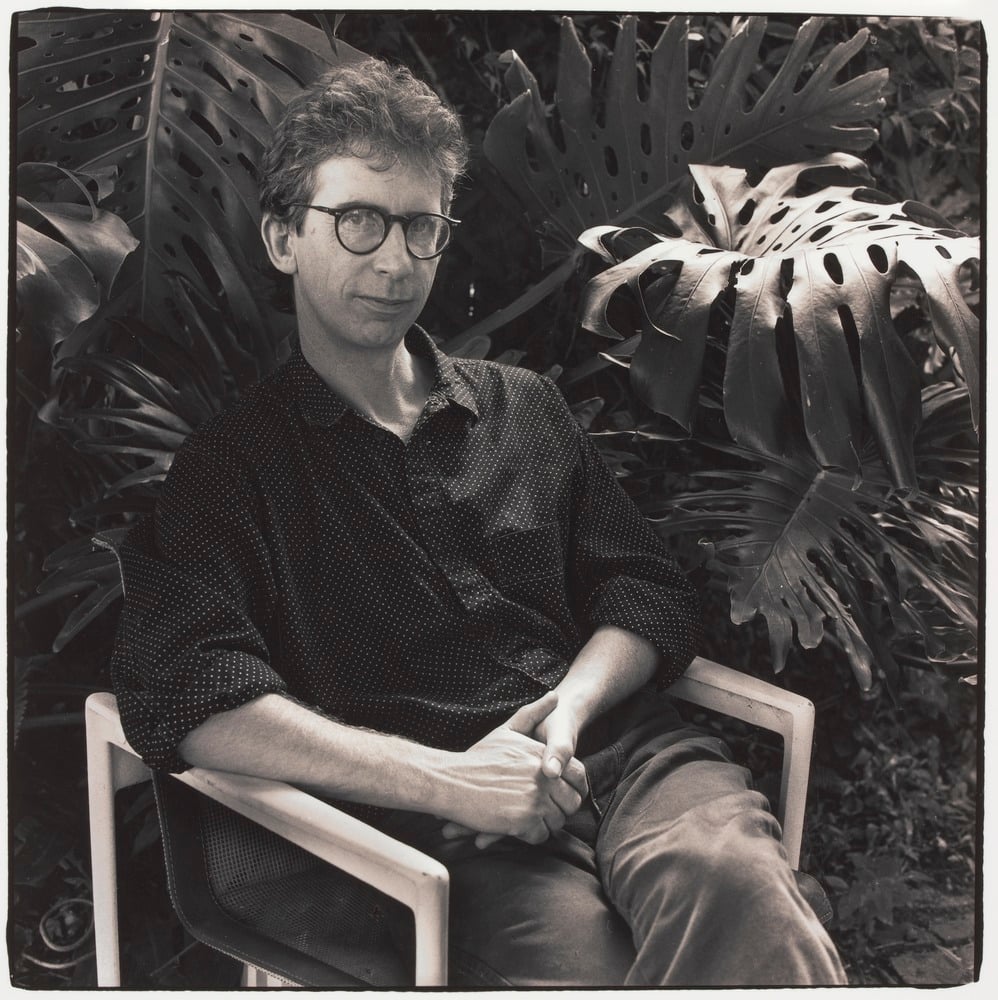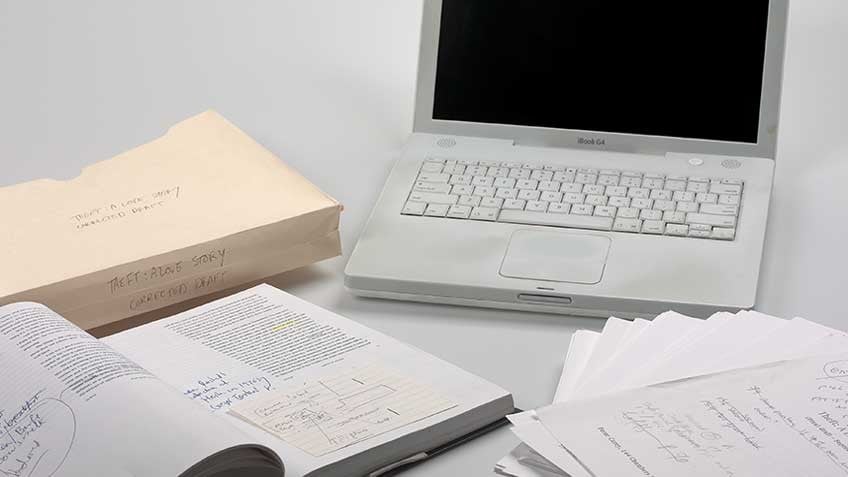In 2001 the State Library of Victoria acquired a significant collection of the papers of novelist Peter Carey, specifically material related to his Booker Prize winning novel True History of the Kelly Gang. From a collection point of view the most significant aspect of these papers was the inclusion of the laptop on which Peter had written his novel.
With its ordered file structure and multiple iterations of chapter developments, editing, plus other documents and significant emails, the laptop was a dream collection item, both for its content and as an iconic display object. The Apple MacClassic, with installed Eudora email software, represented the beginning of that transition from paper-based to personal born-digital archives.
While the end product of Peter Carey’s creative process was still a published physical book you could hold in your hand, True History of the Kelly Gang with its multiple drafts was completely written in digital form. For the Manuscripts Collection, used to collecting largely paper based material it posed some exciting challenges in terms of the management of a large data-set of literary drafts, photographs, related papers, and correspondence (emails) all in digital format. It also posed other questions: should we still call these manuscripts?; and in a digital world, how do you define original materials?; and what are the conditions of acquisition that define a unique item when its digital?

Peter Carey, 1988, H90.41/1
However, this was 2001 and many of these questions, and the evolution of digital forensic tools, were for the future. Our first priority for the laptop was to create a complete disk image of the hard drive, thus ensuring that all the content and back-end data was duplicated and stored on our secure server. Only then could we begin to plan how to process the digital materials and think about what was required in making born-digital archives accessible to users.
Since 2001, the amount of personal born-digital content coming in to the collection has increased substantially. The Library of course has many legacy carriers of digital content – 3inch floppy discs; CDs; DVDs; and more recently memory sticks; external drives, and computer hard drives.
We also have large holdings of analogue material on tapes and cassettes, and many thousands of these, particularly from our oral history collections, have been transferred to digital format to ensure their long-term preservation. Analogue recordings do not have a long life-span and it has been essential to move some of this material to digital, for both preservation reasons, and also to ensure future accessibility as older carriers and their players become obsolete.

Listening post located in the Arts Library, State Library Victoria
Born-digital material is a game-changer for peoples’ personal records, and also for collecting institutions like the State Library of Victoria. In 1916 it was possible for a soldier to write his diary in the trenches of France, and for his family in Australia to later put that in a drawer and keep it for one hundred years in the knowledge that when they wanted to look at it at any time, or deposit it with the State Library of Victoria, they could; that if kept in the right conditions it would be safe and secure and as usable in 2016 as it was in 1916. This is not the case with digital material.
Digital data – whether photographs, emails, or personal records, and their associated carriers (laptop, external drives, memory-sticks) are the product of an ever-evolving and changing technology; this is quite unlike the diary or physical book (the codex form) that has not substantially changed for centuries.
The long-term survival of personal digital records requires intervention almost at the point of creation. Yes there is automatic data (metadata) created around most digital files, but to be usable and understandable over time, and especially if personal archives find their way into the State Library collection, care must be taken at the outset to add further information to make digital records identifiable and usable.
Personal digital files require naming and ordering in a definite file structure using folders and sub-folders, and the content must be migrated to new carriers for it to last any length of time. While it is relatively easy to pick up a letter or piece of paper with writing on it and to understand almost immediately what it is you are looking at and where it might fit in someone’s personal records, it is not so easy with an unidentified digital file.
As a collection manager acquiring manuscripts on a regular basis, the excitement of dealing with personal digital archives is both rewarding and challenging. Yes there will be gaps in future records because intervention into personal digital files was not undertaken. Loss of digital content is inevitable. But where that intervention has taken place, and records like digital, oral histories or photographs, or Peter Carey’s digital drafts for his novel have been acquired at an early stage and not kept on an old laptop in an attic somewhere, it is obvious that the richness of personal digital records are just as rewarding as that of paper based records.
This post is part of Born Digital 2016, the inaugural digital preservation week – an initiative of the National and State Libraries of Australasia raising awareness of the importance of preserving digital content for the public good.




Very useful, Dr Molloy.
I have a retirement project underway along these lines. Updating past research and putting it in html format. With no plans as to where it goes in the future!
Thank you.